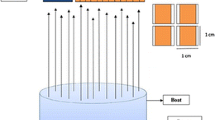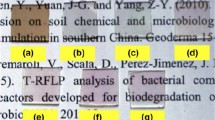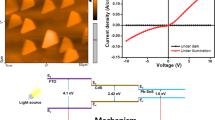Abstract
We discuss the modeling of thin films of transparent conducting oxides and we compare the predictions with the observed properties of cadmium stannate. Thin films of this material were deposited using radio-frequency magnetron sputtering. The Drude free-carrier model is used to model the optical and electrical properties. The model demonstrates the need for high mobilities. The free-carrier absorbance in the visible spectrum is used as a comparative figure-of-merit for cadmium stannate and tin oxide. This shows that free-carrier absorbance is much less in cadmium stannate than in tin oxide. X-ray diffraction shows that annealed films consist of a single-phase spinel structure. The post-deposition annealing sequence is shown to be crucial to forming a single phase, which is vital for optimal optical and electrical properties. The films are typically high mobility (up to 65 cm2 V−1 s−1) and have carrier concentrations as high as 1021 cm−3. Resistivities are as low as 1.3 10−4 Ω. cm, the lowest values reported for cadmium stannate. Atomic force microscopy indicates that the root-mean-square surface roughness is approximately ±15Å. Cadmium stannate etches readily in both hydrofluoric and hydrochloric acid, which is a commanding advantage over tin oxide.
Similar content being viewed by others
References
V.K. Jain and A.P. Kulshreshtha,Sol. Energy Mater. 4, 151 (1981).
G. Haacke,J. Appl. Phys. 47, 4086 (1976).
G. Haacke, H. Ando and W.E. Mealmaker,J. Electrochem. Soc. 124, 1923 (1977).
A.J. Nozik,Phys. Rev. B. 6, 453 (1972).
M. Born and E. Wolf,Principles of Optics (New York: Pergammon Press Inc., 1991).
S. Shimada, I. Sato and K. Kodaira,J. Electrochem. Soc. 135, 3165 (1988).
M.T. Mohammad and W.A.S. Abdul Ghafor,Solid St. Comm. 88, 227 (1993).
L.A. Siegel,J. Appl. Crystallography 11, 284 (1978).
E. Burstein,Phys. Rev. 93, 632 (1954).
P.F. Baldasaro, E.J. Brown, D.M. Depoy, B.C. Campbell and J.R. Parrington, 321,The First NREL Conf. Thermophotovoltaic Generation of Electricity, eds. T. J. Coutts and J.P. Benner, (New York: American Institute of Physics, 1994), p. 29.
I. Hamberg and C.G. Granqvist,J. Appl. Phys. 60, R123 (1986).
Author information
Authors and Affiliations
Rights and permissions
About this article
Cite this article
Coutts, T.J., Wu, X., Mulligan, W.P. et al. High-performance, transparent conducting oxides based on cadmium stannate. J. Electron. Mater. 25, 935–943 (1996). https://doi.org/10.1007/BF02666727
Received:
Issue Date:
DOI: https://doi.org/10.1007/BF02666727




